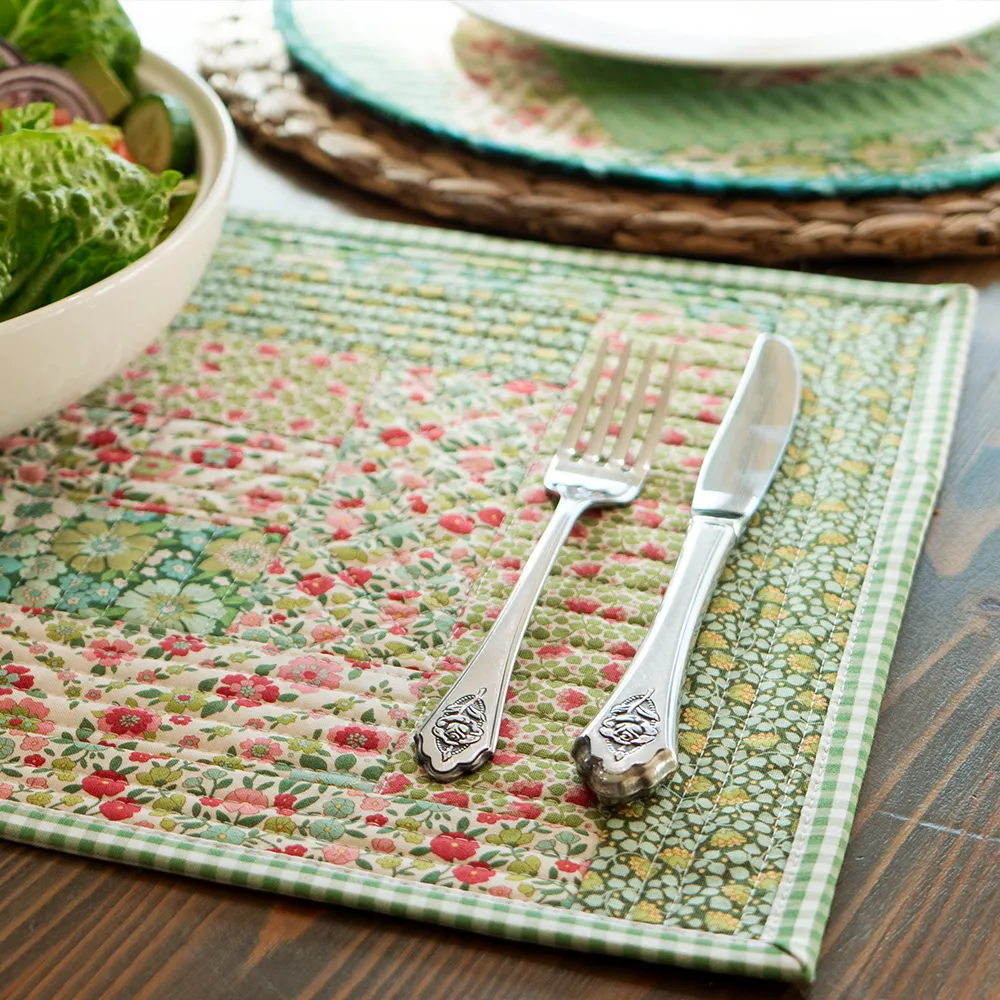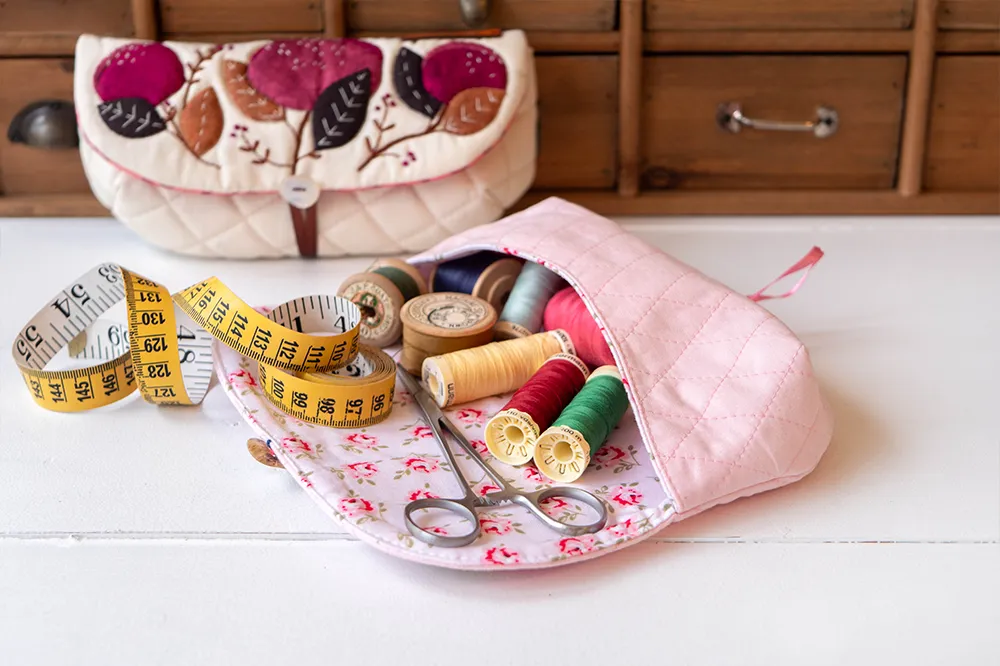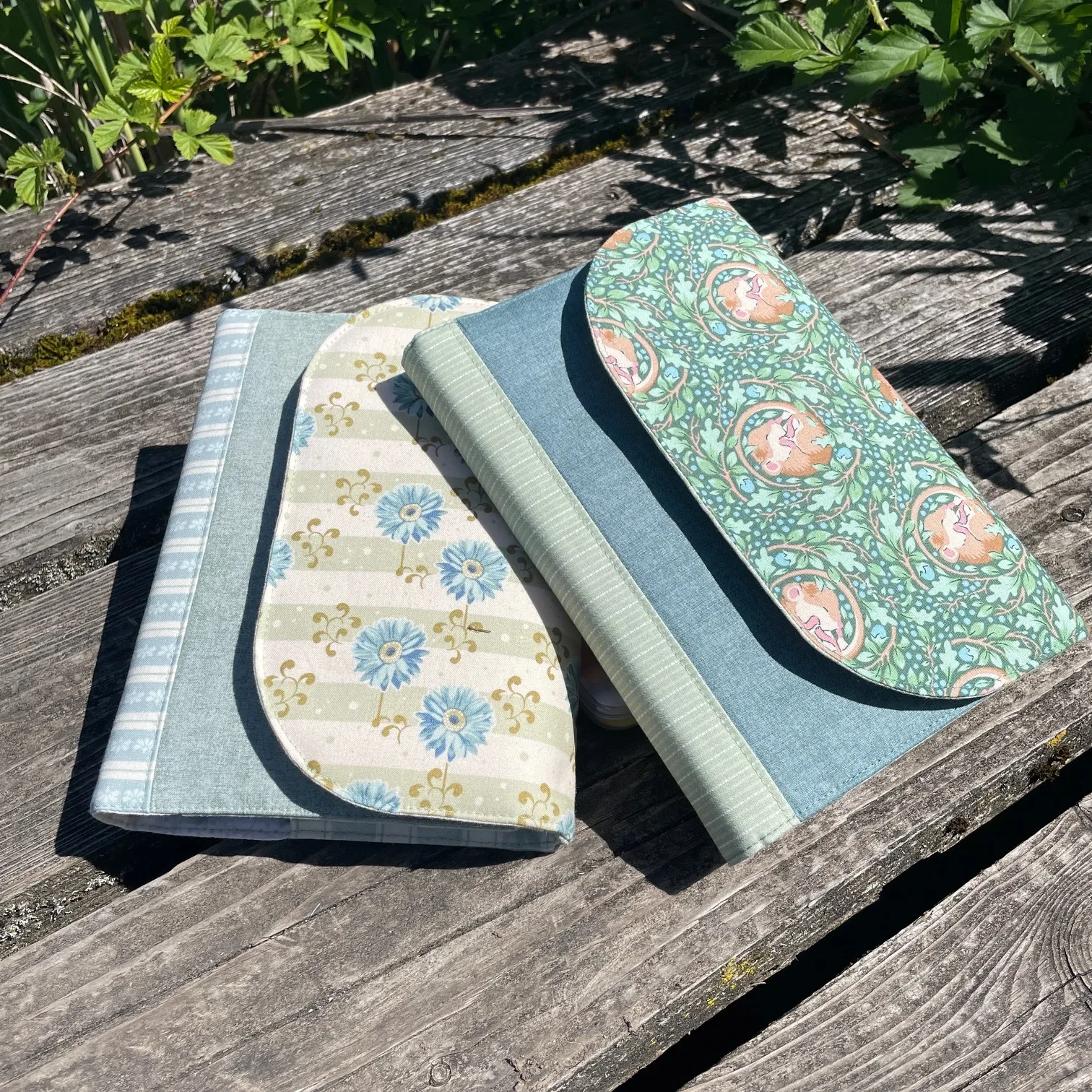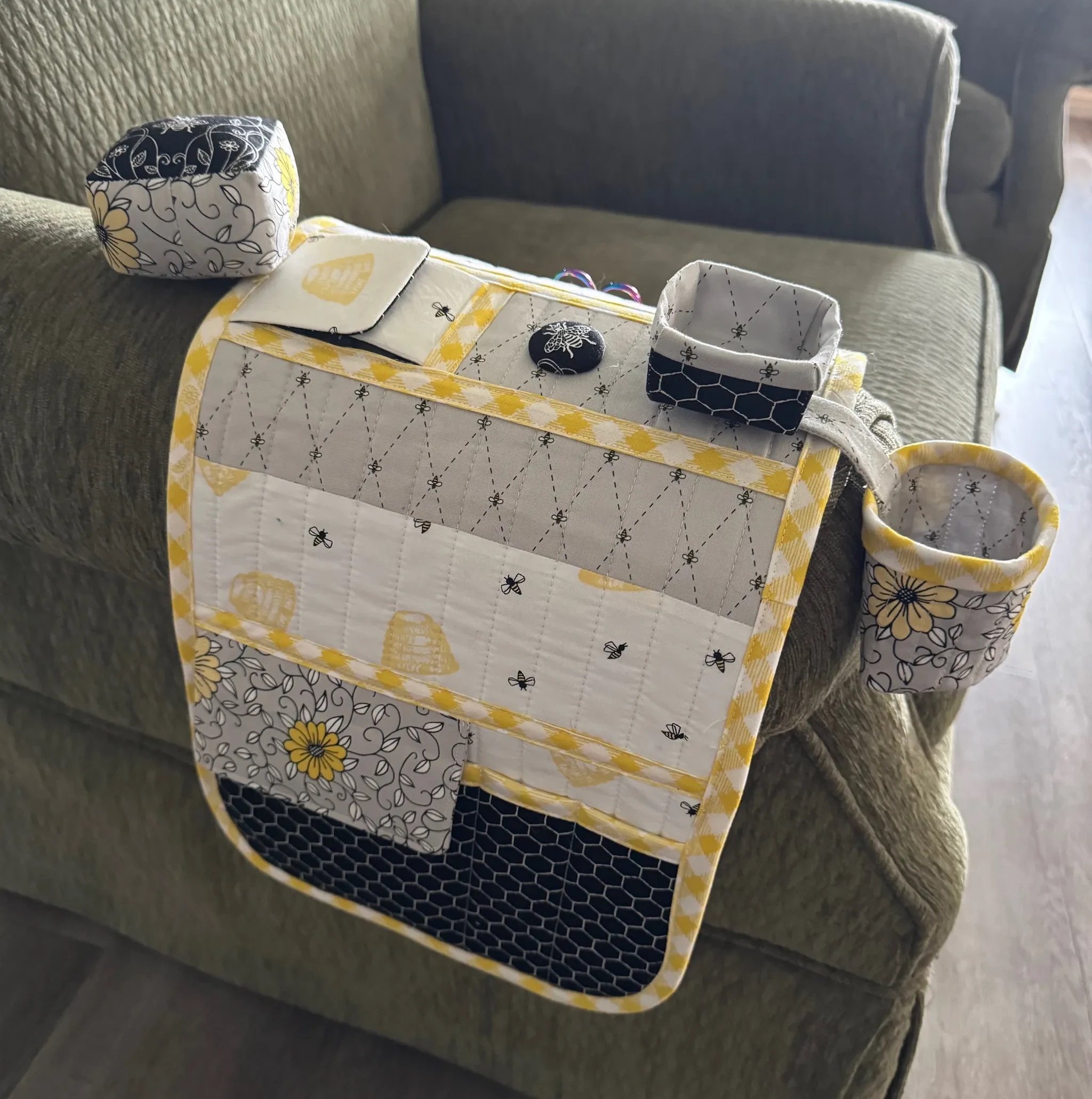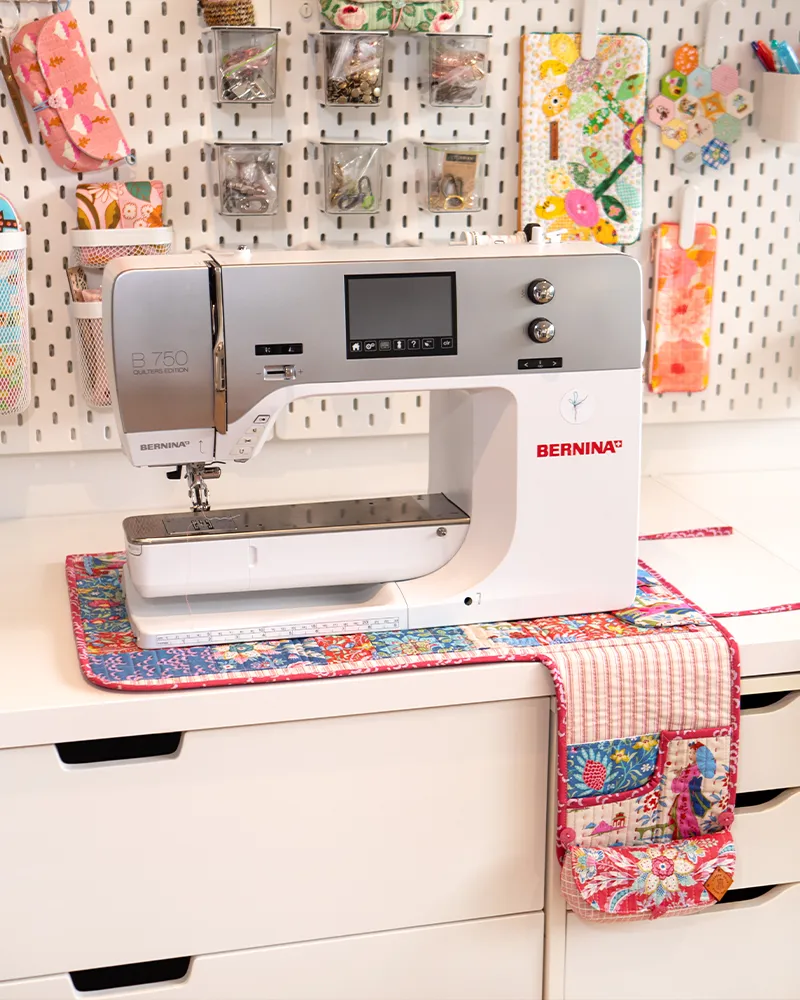
Making the Sewing Space Station Mission 2: Front Tool Panel
Let's talk about making the most useful tool panel of all time!
Quilt Sandwiches & Other Tasty Treats
Welcome back if you're here from Part 1 in this series of blog posts!
If you've just landed here and missed the first part, you can find that here.
How have you been going getting everything all cut out for the Sewing Space Station and sewing your quilted panels? Congratulations on your amazing progress!
Now we're up to the next section of this pattern which is sewing the Front Tool Panel - that incredibly useful divided pocket section that's going to take your sewing organisation to the next level!
Don't forget to grab a copy of the pattern if you haven't already got one.
If you're still cutting out the fabric for these panels, watch my live video (no longer live!) where I shared tips on fabric placement and cutting out this part as well. This is a great opportunity to fussy cut with the eye to cutting down afterwards to highlight some special parts. Some of the very clever cookies in the Facebook group did some amazing versions featuring Tula Pink fabric that were incredible!
So now you're cut out, you’re up to Step 2 in the pattern:
- make a sandwich with your Front Tool Panel top/fleece/bottom fabric
- make a sandwich with your Outer Tool Pocket exterior/fleece/lining fabric
- don't skip the woven interfacing on the Inner Tool Pocket here or you'll end up with a pocket that stretches and goes floppy over time. This little bit of extra effort is well worth it as something that keeps its shape is so much easier to use.
Quilt these panels …you can hand quilt, machine quilt in straight lines, FMQ, but for a seamless look, why not try and match up the style you started when you were quilting the Top panels.
Then trace the template onto these pieces, baste around the edges and cut out.
Now, jump to Step 6 in the pattern. Here's my top tips for the rest of this section …
When making Inner Tool Pocket, make sure they are facing the right orientation when fusing the interfacing (short side horizontal, long side vertical!) and that if you're using direction fabric that it's going the way you intend.
You can watch Video Pt 3 to see this section demonstrated with lots of tips included.
Binding That Tricky Inner Curve
When sewing the binding to that tricky inner curve on the pocket, remember that this part is tricky. Take it slowly, and be patient.
This is the part of the video that takes you through binding this curve.

These tips are super helpful …
- Snip into the seam allowance at the curve ¹⁄₈” deep about 4-5 times
- Clip your binding to the edge, straightening out the curved edge as you come to it, don’t try and bend the binding to the curve
- Slightly stretch your binding so it will be snug
- Go back and re-stitch that curved section if you don’t get the seam allowance quite right the first time
- Glue basting is a great option for the holding the second edge in place before you sew it down - I love this for perfect bias binding!
If you’re still not happy with how this inner curve is looking when you’re finished, remember to stand back … it always looks better from a distance than when you’re working on it!
Joining the Outer Tool Pocket to the Front Panel
You might notice that the Outer Tool Pocket is just a smidge larger than the panel you'll be sewing it to. There's a special reason for this! Having a little bit larger means you can accommodate larger tools in there without it being too tight to use. So you'll be slightly stretching the Panel underneath and slightly squishing up the Top Pocket Panel (which is pretty easy as it's quilted) and you'll have no problem getting them both to align.

Before stitching the dividing line down the centre of the Inner and Outer Tool pocket, think about which tools you’ll be using in this pocket.
You can audition different tools, and move the stitching line across to fit them, or even leave it off altogether to have a single section.
Some ideas for tools you might want to keep in here are:
- small scissors
- large scissors
- rotary cutter
- hera marker
- fabric pen
- quick unpick (seam ripper!)
- basting glue pen
- seam roller
- snacks for emergencies (!)
I hope you have great fun sorting through your most used tools and working out which ones deserve a 'spot' in this very cool tool holder!
Now you've finished up this section, you can move on to putting everything together and binding which we cover in the next blogpost ...
Join my Facebook community

If you're a social bee, get involved with over 1100 sewists, quilters, and creators from around the world. Share your creations and get inspired!



